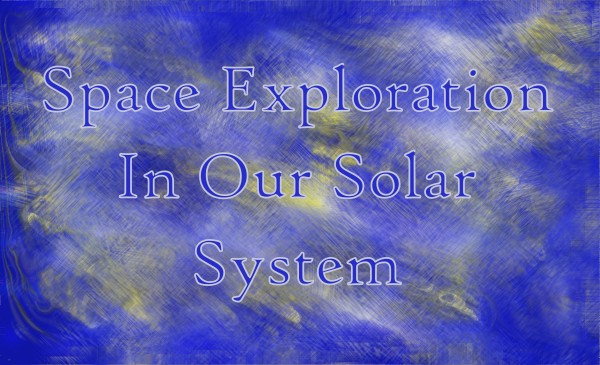Home page | Generative Images Collection | Blog Entries

Space Exploration In Our Solar System
Published on 19 December 2023 by Juan-S.
Mars has been the focus of many space exploration missions in the past decades, but what lies beyond the red planet? In this article, we will explore some of the most intriguing destinations in the outer solar system and beyond, and why they are worth visiting.
Jupiter
One of the most fascinating places to explore is Jupiter, the largest and most massive planet in our solar system. Jupiter has a powerful gravitational field that influences many other bodies, including its four large moons: Io, Europa, Ganymede and Callisto. Each of these moons has its own unique features and potential for life. Io is the most volcanically active world in the solar system, with hundreds of eruptions spewing lava and sulfur across its surface. Europa is covered by a thick layer of ice that may hide a global ocean of liquid water beneath. Ganymede is the largest moon in the solar system, bigger than Mercury, and has its own magnetic field that protects it from Jupiter's radiation. Callisto is the most heavily cratered moon, with a dark and ancient surface that may also harbor a subsurface ocean.
Saturn
Another intriguing destination is Saturn, the second largest planet and the most beautiful one, with its majestic rings and dozens of moons. Saturn's rings are made of countless particles of ice and dust that orbit the planet in a thin disk. The rings are constantly shaped by the gravity of Saturn and its moons, creating gaps, waves and spokes. Some of Saturn's moons are also fascinating to explore, such as Titan, the only moon in the solar system with a thick atmosphere and a complex weather system. Titan has lakes and rivers of liquid methane and ethane on its surface, and may have a water-ammonia ocean under its crust. Another moon of interest is Enceladus, which has geysers of water vapor and ice particles erupting from its south pole. These geysers indicate that Enceladus also has a subsurface ocean that may be habitable for some forms of life.
Uranus
Beyond Saturn lies Uranus, the seventh planet from the sun and the third largest one. Uranus is unique among the planets because it rotates on its side, with an axial tilt of 98 degrees. This means that Uranus has extreme seasons, with one pole facing the sun for 42 years and then switching to the other pole for another 42 years. Uranus also has a ring system, although much fainter than Saturn's, and 27 known moons. Some of these moons are interesting to study, such as Miranda, which has a bizarre terrain with huge cliffs and canyons. Another moon is Ariel, which has a relatively young surface with few craters and many valleys and ridges.
Neptune
The eighth and farthest planet from the sun is Neptune, the fourth largest one and the windiest one. Neptune has supersonic winds that reach speeds of over 2,000 kilometers per hour, creating huge storms and vortices in its atmosphere. Neptune also has a ring system, although very faint and clumpy, and 14 known moons. The most notable moon is Triton, which orbits Neptune in the opposite direction of its rotation. Triton is very cold, with a surface temperature of -235 degrees Celsius, but it also has geysers of nitrogen gas and dust that spew from its surface. Triton may have a thin atmosphere and a subsurface ocean as well.
Kuiper Belt and beyond
Beyond Neptune lies the Kuiper Belt, a region of icy objects that extends from about 30 to 55 astronomical units (AU) from the sun. The Kuiper Belt is home to many dwarf planets, such as Pluto, Eris, Haumea and Makemake. These dwarf planets are very diverse in size, shape, color and composition, and may have atmospheres, moons and even rings. Pluto is the most famous dwarf planet, having been visited by NASA's New Horizons spacecraft in 2015. Pluto has a thin atmosphere that freezes and sublimates depending on its distance from the sun. Pluto also has five known moons, including Charon, which is almost half its size and forms a binary system with Pluto.
Beyond the Kuiper Belt lies the Oort Cloud, a hypothetical sphere of comets that surrounds the solar system at a distance of up to 100,000 AU from the sun. The Oort Cloud is thought to be the source of many long-period comets that occasionally enter the inner solar system. The Oort Cloud is very difficult to observe directly, but it may contain billions or trillions of comets that could reveal clues about the origin and evolution of our solar system.
There are many exciting places to explore beyond Mars in our solar system and beyond. These places offer us opportunities to learn more about our cosmic neighborhood and ourselves. They also challenge us to develop new technologies and methods to reach them and study them. Space exploration beyond Mars is necessary for advancing our scientific knowledge and our human spirit.
The above article content and research regarding Space Exploration In Our Solar System was compiled with the assistance of AI.
About me | Contact me | Generative Images Collection | Blog Entries
Terms of Use | Privacy Policy | Cookie Policy (This website uses cookies and by continuing to browse this website you agree to the website’s Cookie and Privacy Policies.) | Sitemap
Copyright © juansteph83.com All rights reserved.